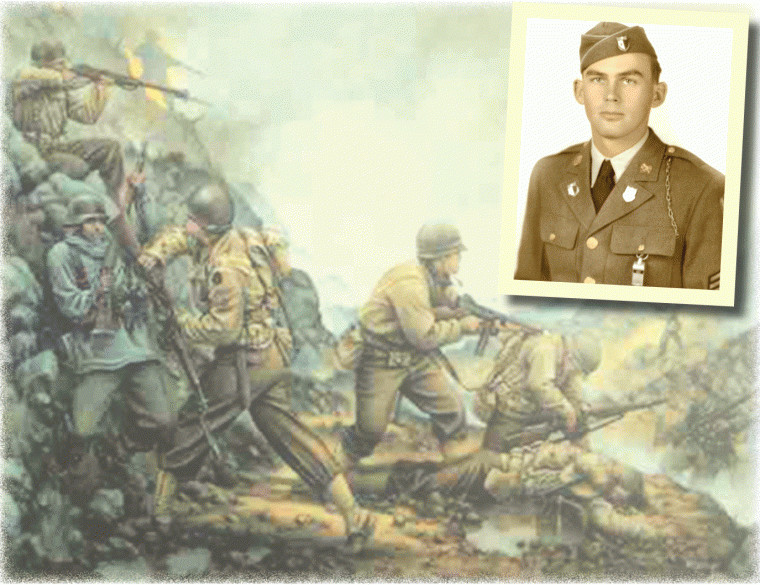He lived to tell about his WWII experience
Many veterans, especially those who saw wartime action, are more often remembered for what they did in service to the U.S., rather than what they didn’t do.
For Donald Howell, three specific events during
World War II contributed to him reaching his 94th birthday and residing at Romberg House in Gonzales.
What Howell did not do – what he missed out on – was not because he failed as a member of the Texas National Guard’s 36th Infantry Division. It was because fate intervened.
Howell was among the soldiers counted upon during the Battle of Salerno, the U.S. Army’s longest WWII campaign when began on Sept. 9, 1943, with a landing south of Naples, Italy. It was the first Allied thrust onto the European continent, and was planned as a surprise landing. But the Germans saw them coming.
Landing craft carrying the first waves of the invasion were 300 yards from shore just after 3 a.m. when German shells began falling. Landing craft took direct hits, spilling men into the sea. Disabled boats created a logjam. Machine gun fire greeted the men who made it to the beach.
But Howell missed out on the bloody battle.
“We got into the landing craft and were supposed to get to shore before daylight,” Howell remembers. “Because the crews were late due to a sandbar, we didn’t get in until daylight.
“I missed the battle, but they had a pretty good fight on the shore,” he recalls.
Three days later, six German panzer divisions faced the Allies, whose units were so decimated by the fierce fighting that Fifth Army commander Lt. Gen. Mark Clark began planning for evacuation.
“Later on though, we were able to advance eight miles inward without any opposition,” Howell says in recounting the turning of the tide in the European Theater.
By January 1944, the Italian campaign had bogged down in the mountainous country which was unsuitable for offensive warfare. The Germans, skillful practitioners of the art of defense, fought a delaying action and gave up ground only when forced to do so.
Then, near the famous Abbey of Monte Cassino, the Allies faced the Rapido River, where the Germans had established their strongest defenses. Not only could German weapons hold up an advance at the Rapido, the river itself was an obstacle. Unfordable at up to 12 feet deep and 40 to 50 feet wide with steep banks, a swift current, ice-cold water and no bridges, the Rapido was the Allies’ worst nightmare.
“The river was so swift, we couldn’t take it by boat,” Howell recalls. “We had to make a footbridge.”
But making it across the river turned out to be the easy part. More than 2,100 Allied forces were killed, wounded or missing in the battle.
Howell missed becoming a casualty.
“After we made it across, we happened upon a minefield where we lost 13 men. I stepped just 12 inches short of one myself,” he says.
Then he missed out on the war itself as a Prisoner of War.
“We were captured just the other side of the Rapido River,” he says. “This was because it had taken us two months to take the outpost on the other side of the river, and they wanted us to break the line of resistance.
“Summarily we were captured,” Howell says. “But, as you can see, we made it out.”
And back to Gonzales.
Comments






